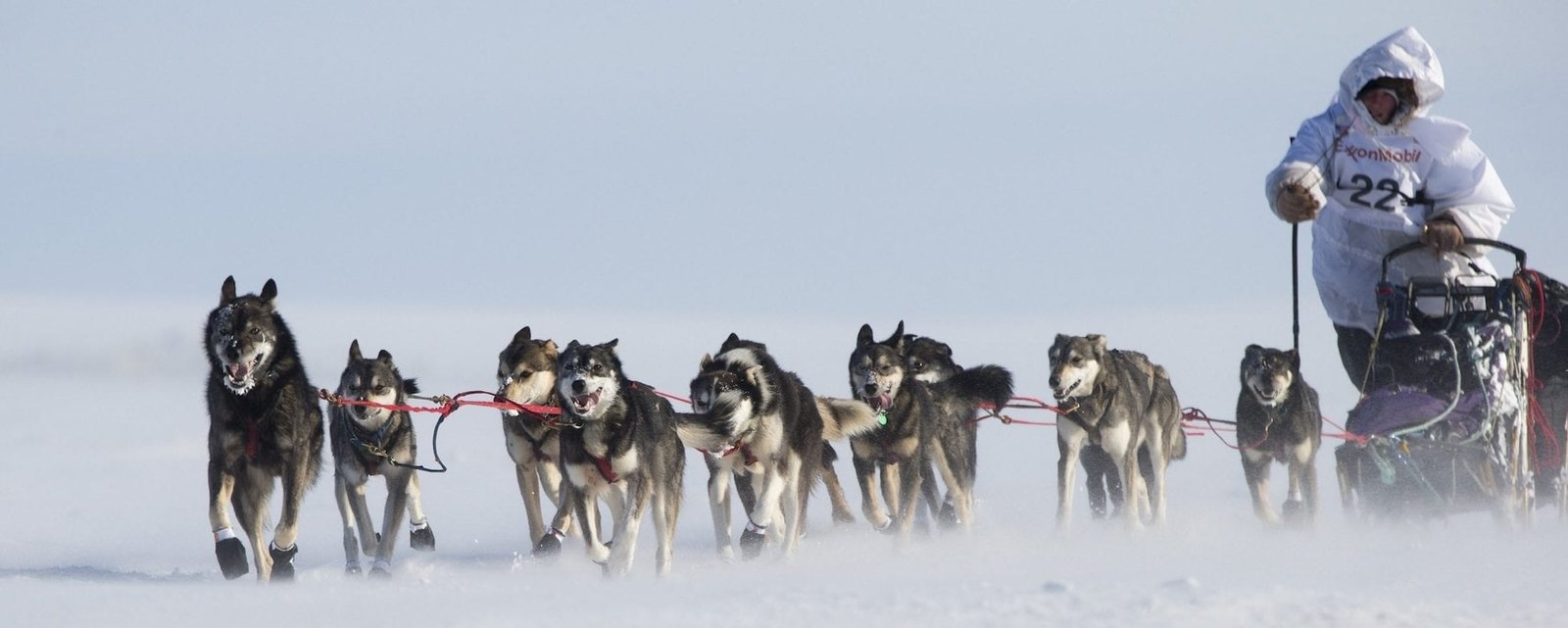Celebrating Iditarod’s epic half-century, we reflect on mushers’ resilience. The trail has witnessed epic challenges and transformations, embodying endurance. This epic race, through blizzards and whiteouts, has become a testament to human and canine fortitude. Iditarod’s saga continues to inspire epic tales of tenacity.
In 1973, an intrepid group of 34 sled dog teams assembled in Anchorage, Alaska, to embark on a legendary adventure – the first-ever Iditarod. Their mission: to be the first to conquer the grueling 1,000-mile journey to Nome in a race through sub-zero winds and uncharted snow. It was a voyage into the unknown, marked by a lack of clear trails and self-sufficiency, as mushers blazed their paths and hauled their supplies.
The early Iditarod was a test of endurance and resourcefulness, where days could pass without a glimpse of another soul, and a third of the competitors bowed out before reaching the finish line. The ultimate victor, Dick Wilmarth, took approximately three weeks to cover the distance, relying on beaver for sustenance and snowshoes to ease the path for his loyal dogs. Little did he know that this spontaneous adventure would become an iconic annual event.
Five decades on, the Iditarod has undergone significant transformation. Today’s mushers benefit from GPS navigation and continuous communication with their support teams. The racecourse is well-marked, accompanied by helicopters for emergency response. The race’s evolution also extends to enhanced veterinary care for the dogs, emphasizing their well-being.
Mark V. Nordman, the Iditarod’s race director and marshal, has been a witness to this evolution. From his early years as a musher in 1983 to his enduring role in race management, he’s seen the Iditarod evolve into a global sled dog racing spectacle. What was once a little-known wilderness race relayed over ham radio has become the world’s most iconic annual sled dog competition, uniting Alaskans in a passion for this remarkable event.
The Iditarod, however, goes beyond racing; it represents Alaska’s heritage. In a land where roads are scarce, dog teams were essential for transportation. The advent of snowmobiles, the “iron dog,” in the 1960s threatened the tradition. In response, “The Mother and Father of the Iditarod Trail Sled Dog Race,” Dorothy G. Page and Joe Redington, Sr., launched the event to safeguard sled dog culture and its invaluable working dogs. The original race traced the historic Iditarod Trail, covering vast terrains and frozen waterways, preserving the essence of Alaska’s sled dog history.
The 50th anniversary of the Iditarod, taking place in 2023, is especially significant. Despite the challenges posed by the pandemic, 50 teams are ready to tackle the traditional 1,049-mile route. This year, a new requirement mandates full vaccination for all participants, volunteers, and personnel.
Jon Van Zyle, an acrylic painter with 43 years in Alaska, holds a unique place in Iditarod history. After competing in the race in 1976, he created a poster in 1977 to promote the event. This iconic artwork marked the beginning of his journey as the “Official Artist of the Iditarod,” contributing numerous posters and artworks that have become collector’s items, depicting the race’s action and Alaska’s breathtaking landscapes.
Jeff Schultz, the “Official Photographer of the Iditarod” since 1981, has played an equally crucial role. His photographs, donated in the early years, have become synonymous with Alaska and the Iditarod. His work has been featured in publications, ad campaigns, and art galleries, making him a central figure in introducing the Iditarod to the world.
Together, Van Zyle and Schultz published a book, “Double Vision Alaska,” featuring more than 120 photographs and paintings. Their collaboration showcases the race’s essence, as well as their shared passion for preserving its legacy.
The transformation of the Iditarod over the past five decades is undeniable. Today’s race is more streamlined, safer, and supported by advanced technology. However, the spirit of adventure that unites mushers, dogs, and spectators endures. The Iditarod remains a testament to the indomitable spirit of those who brave the wilds of Alaska, as well as the enduring artistry of Jon Van Zyle and Jeff Schultz, who have brought this remarkable event to the world’s attention. Their work, promoting the Iditarod and the culture it represents, has left an indelible mark, inspiring generations to embrace the journey, the wilderness, and the dogs that define the spirit of the Iditarod.



































